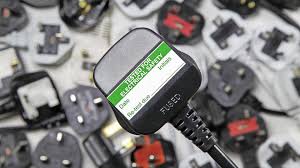In today’s rapidly evolving digital landscape, shopping behaviors are shifting dramatically. Traditional purchasing habits are adapting to online convenience, driven by innovations in technology and logistics. Two powerful business models leading this transformation are E-commerce and Q-commerce. Though both aim to enhance consumer convenience, they cater to distinct needs.
For businesses planning to enter or scale in either space, choosing the right development partner is vital. A trusted name like Tech Innovations LLC offers the expertise needed to develop high-performing platforms tailored to each model.
Key Features of E-Commerce
1. International Accessibility
E-commerce platforms make geographical boundaries irrelevant and allow for a global shopping experience. Whether a user is seated in New York, in Tokyo, or in any small village in Africa, he or she can have access to products of various international and local brands. This removes borders in a business’s marketing potential and encourages the symbiosis between cultures.
2. Convenience- Great Access
Being an e-commerce platform means that every user has access to the goods at any time of the day and night when a purchase can be made from anywhere. Different from physical stores, where the opening hours are mostly fixed, e-commerce allows for a very flexible and seamless journey for consumers.
3. Variety of Goods
One of the main strengths of e-commerce is the wide array of products. From fashion and electronics to rare items, consumers typically get access to vast inventories-often from several suppliers in one place.
With AI to present personalized recommendations driven by user behavior, the user experience is enhanced, engagement is induced, and conversion rates are improved.
Features of Q-Commerce
1. Instant Gratification
Q-commerce boasts order fulfilment within minutes or hours. This model meets the need for the extremely urgent delivery of groceries, medications, or hot meals in the soonest possible manner, using hyper-efficient logistics systems.
2. Hyperlocal Delivery
Q-commerce operates through micro-fulfilment centers localized in zones unlike e-commerce. Such hyperlocal focus allows for quick deliveries especially in crowded urban areas.
3. Curated Essentials
While e-commerce boasts of a wide variety, Q-commerce deals in fast-moving consumer goods. These include groceries, household items, and personal care items- necessities people often need as an urgent.
4. Subscription Services
Frequency service models are offered on Q-commerce platforms for repeat deliveries, which serves as further convenience for busy consumers. These repeat services also enhance brand loyalty and customer retention.
Comparison Table: E-commerce vs. Q-commerce
| Feature | E-commerce | Q-commerce |
| Delivery Speed | Next-day to standard delivery | Within minutes or hours |
| Product Range | Extensive and diverse | Limited to essential and frequently used items |
| Geographic Scope | Global reach with international shipping | Localized to specific urban or metro areas |
| User Focus | Flexible shopping, variety, and research-based decision making | Fast access, urgent needs, and convenience-first shopping |
| Technology Use | AI-driven personalization and global logistics systems | Real-time tracking and optimized local delivery systems |
| Platform Examples | Amazon, Alibaba, Shopify | Zapp, Getir, Dunzo |
Conclusion
Both E-commerce and Q-commerce represent powerful solutions for today’s tech-savvy consumer, but they meet very different expectations. E-commerce is ideal for variety, personalization, and global access, while Q-commerce excels in speed, convenience, and hyperlocal delivery.
Whether you’re planning to build a broad-scale digital marketplace or a fast, local delivery platform, a reliable partner like Tech Innovations LLC can help bring your vision to life. Their experience in developing cutting-edge digital platforms ensures a scalable, secure, and future-ready solution.
Understanding the distinctions between E-commerce and Q-commerce helps businesses choose the right strategy for success in today’s competitive digital economy.





